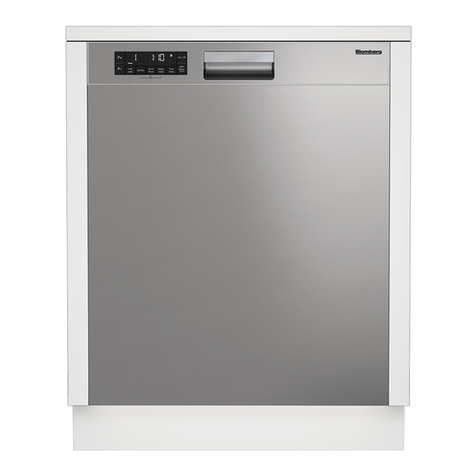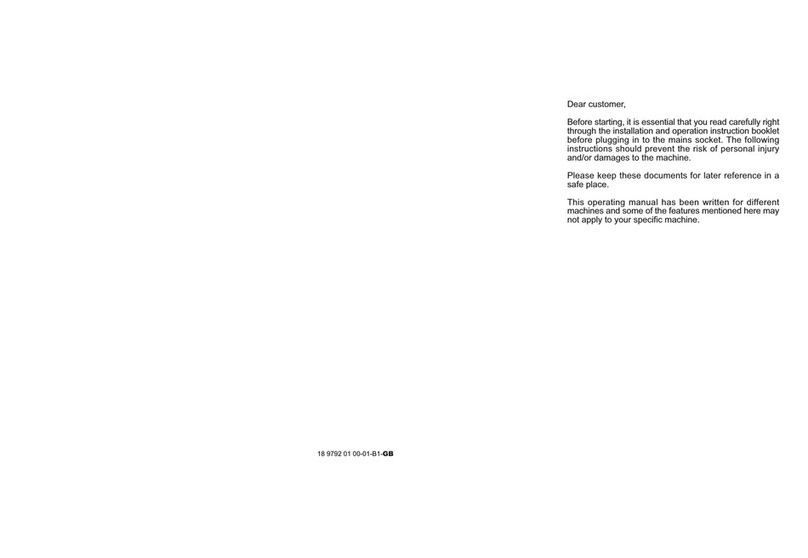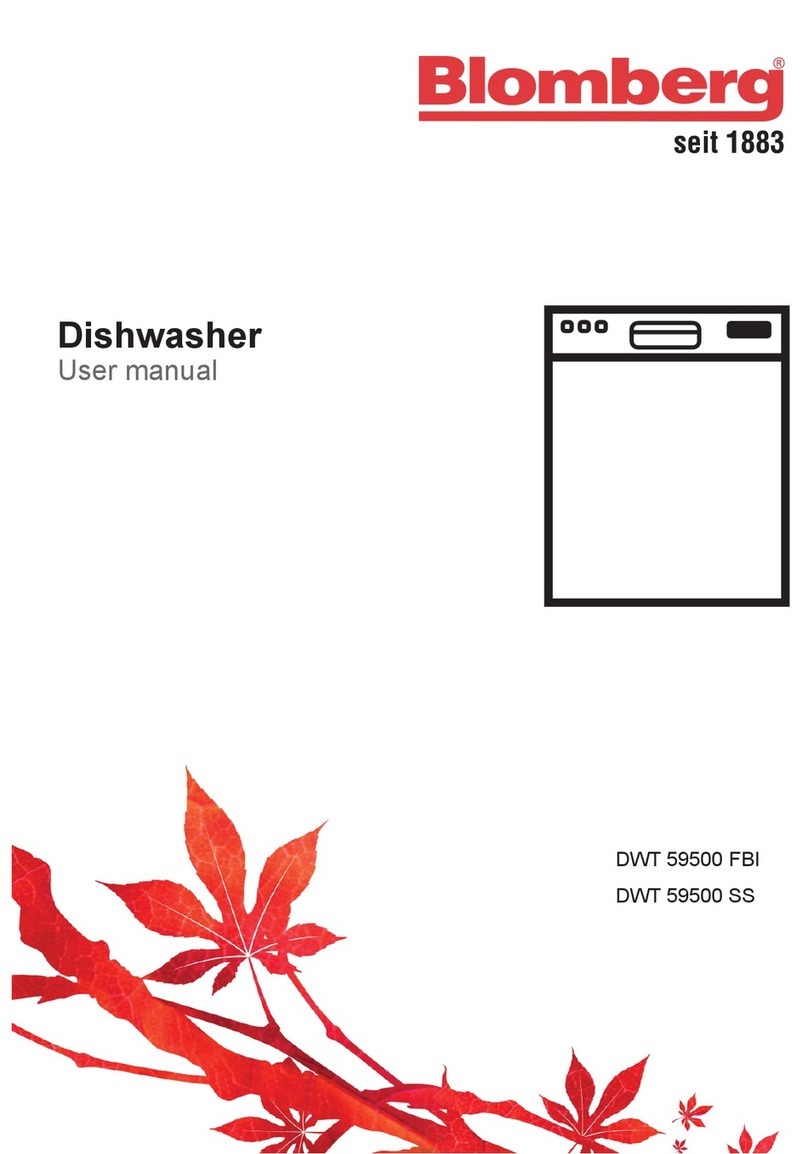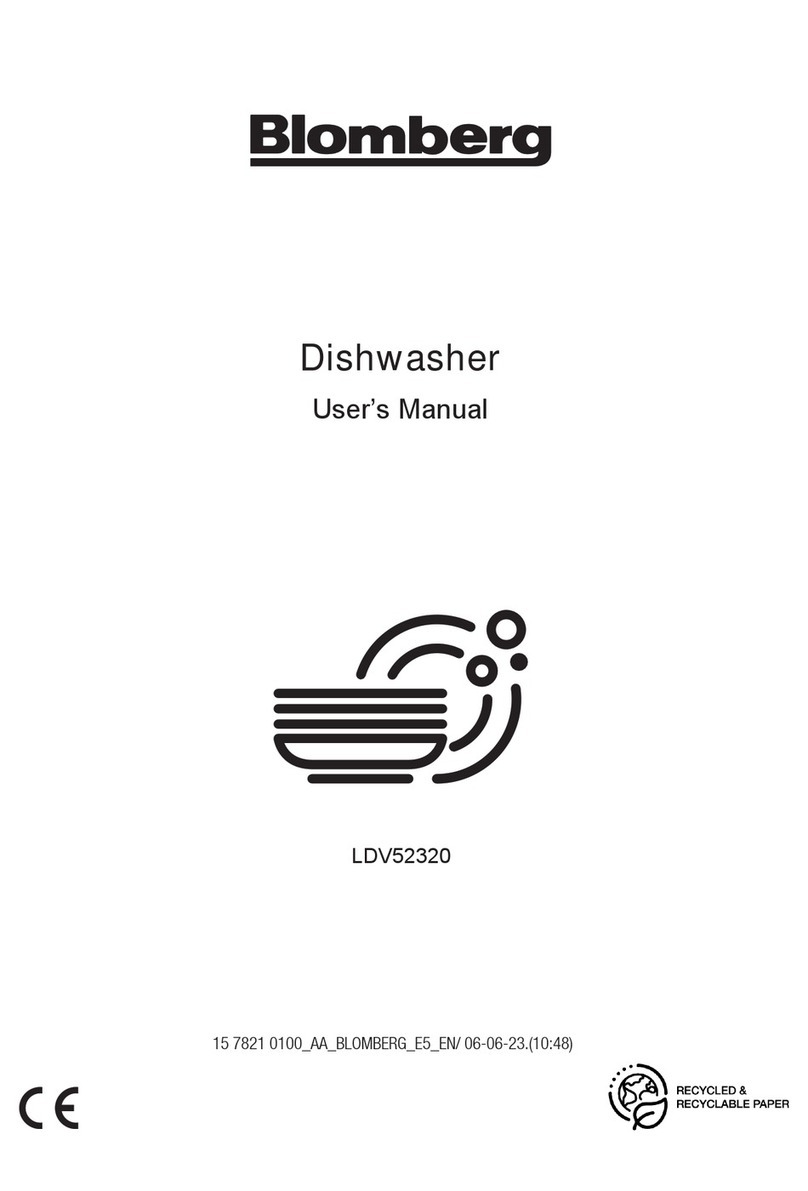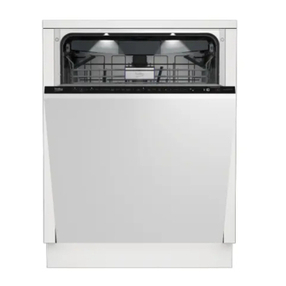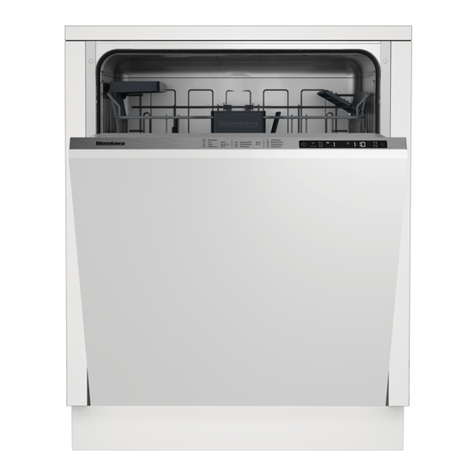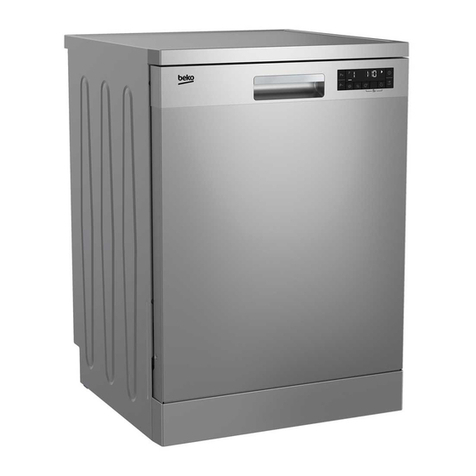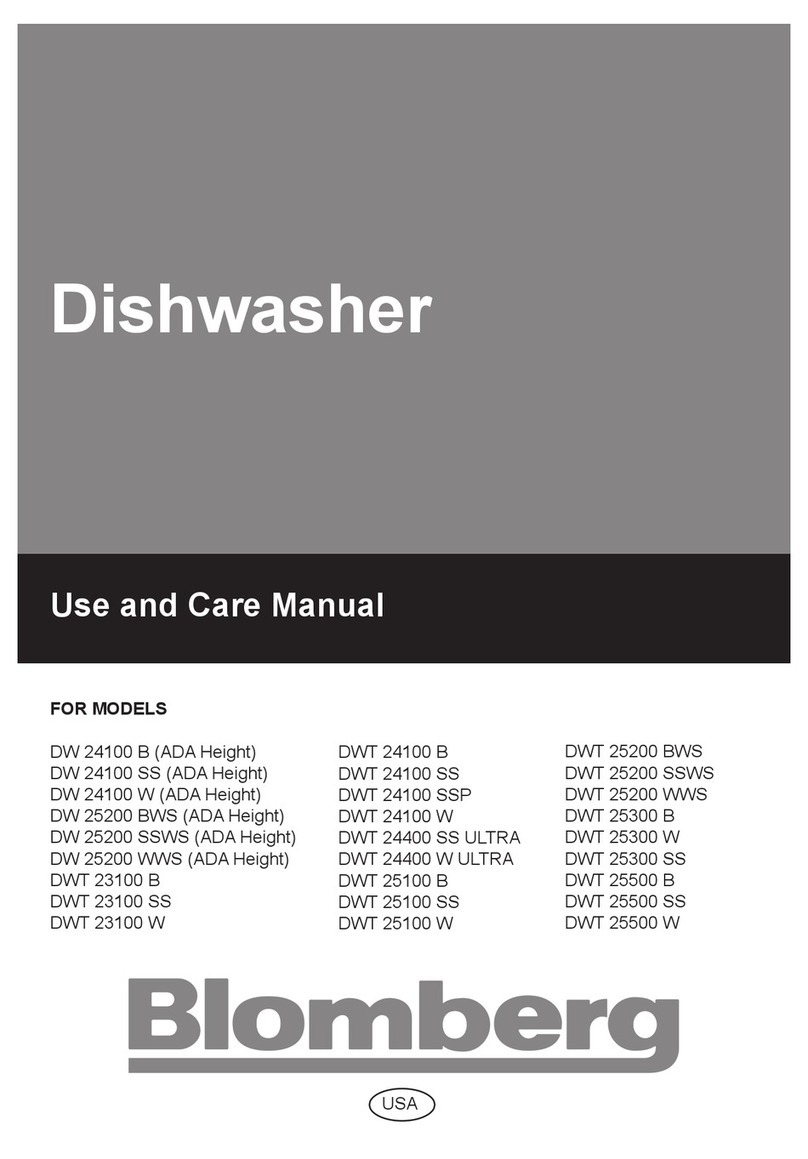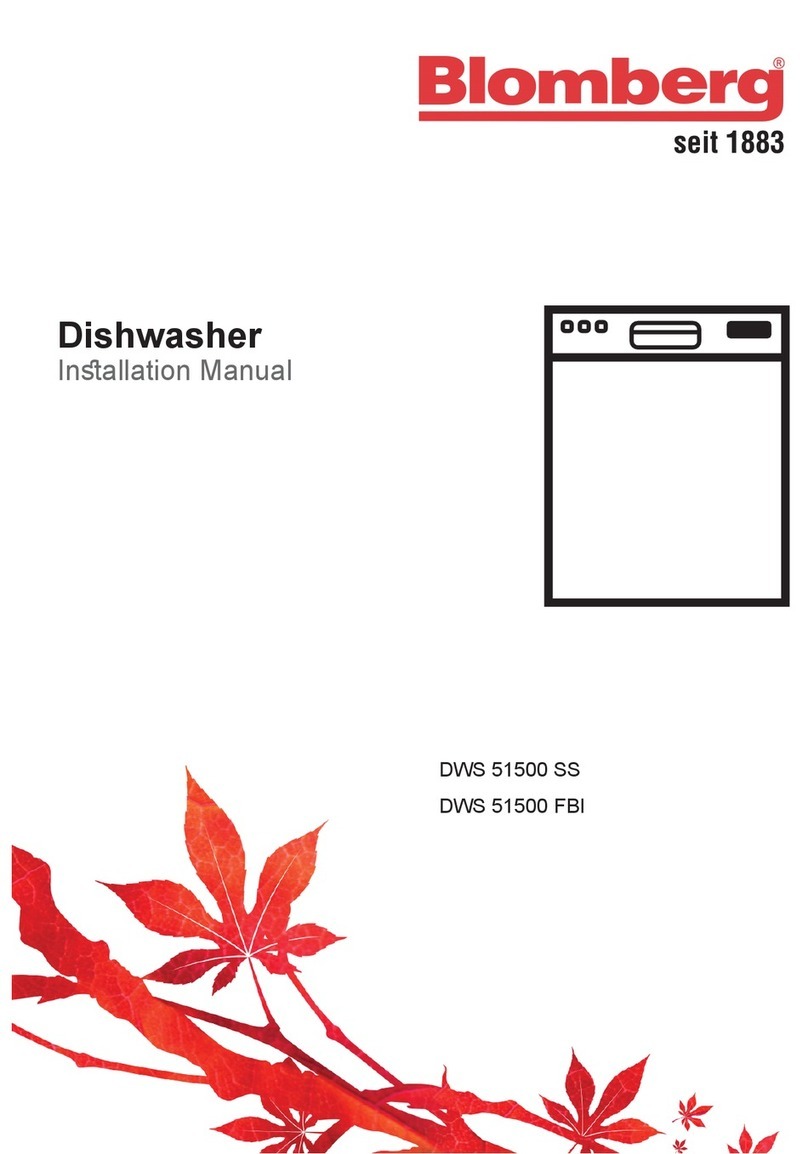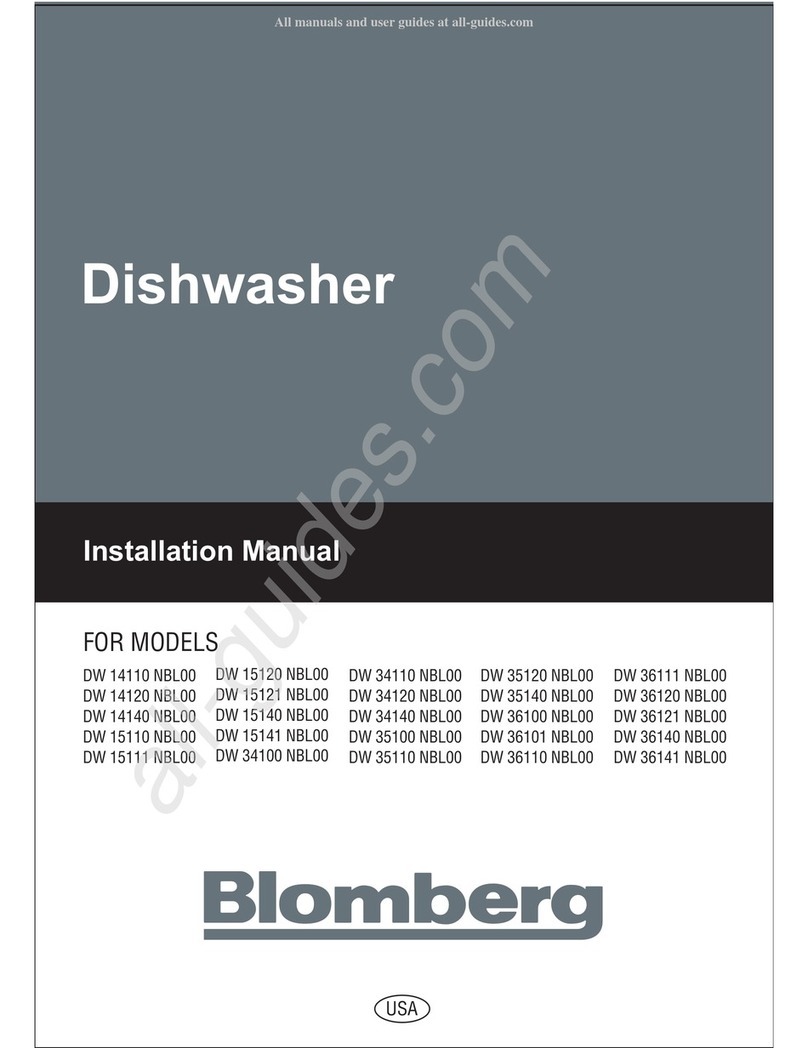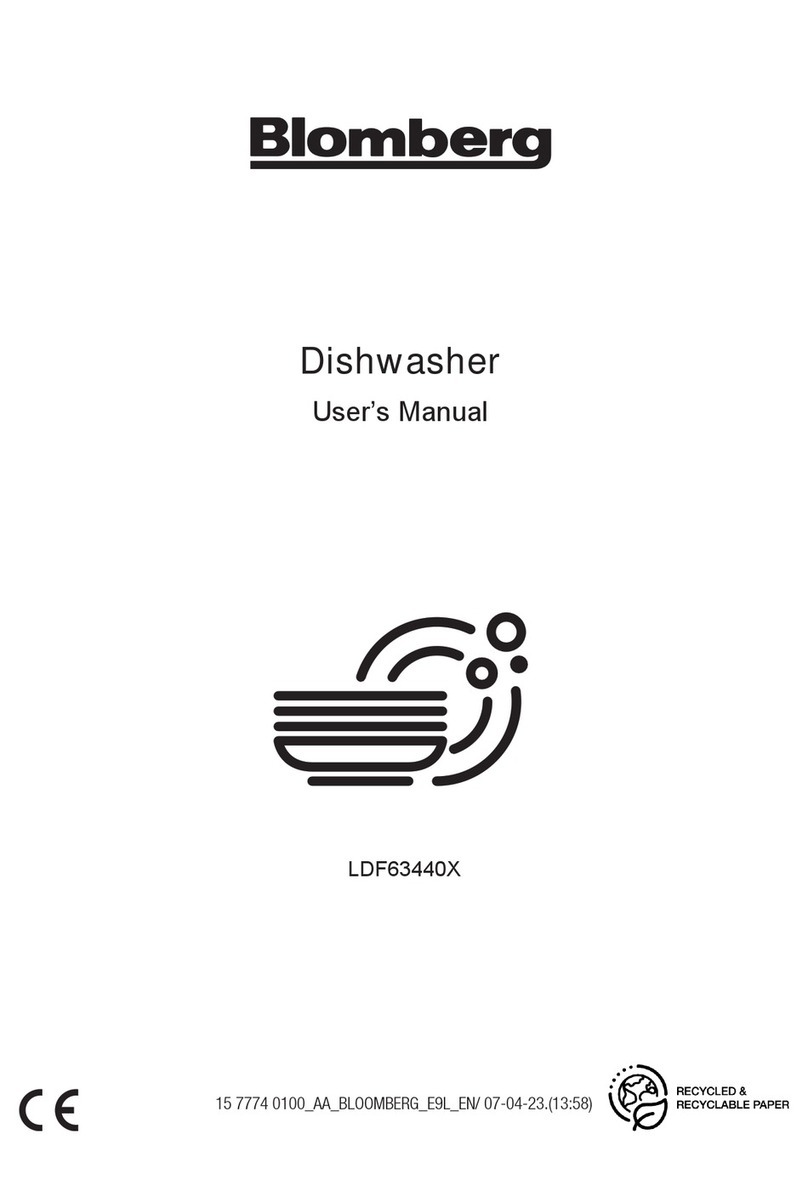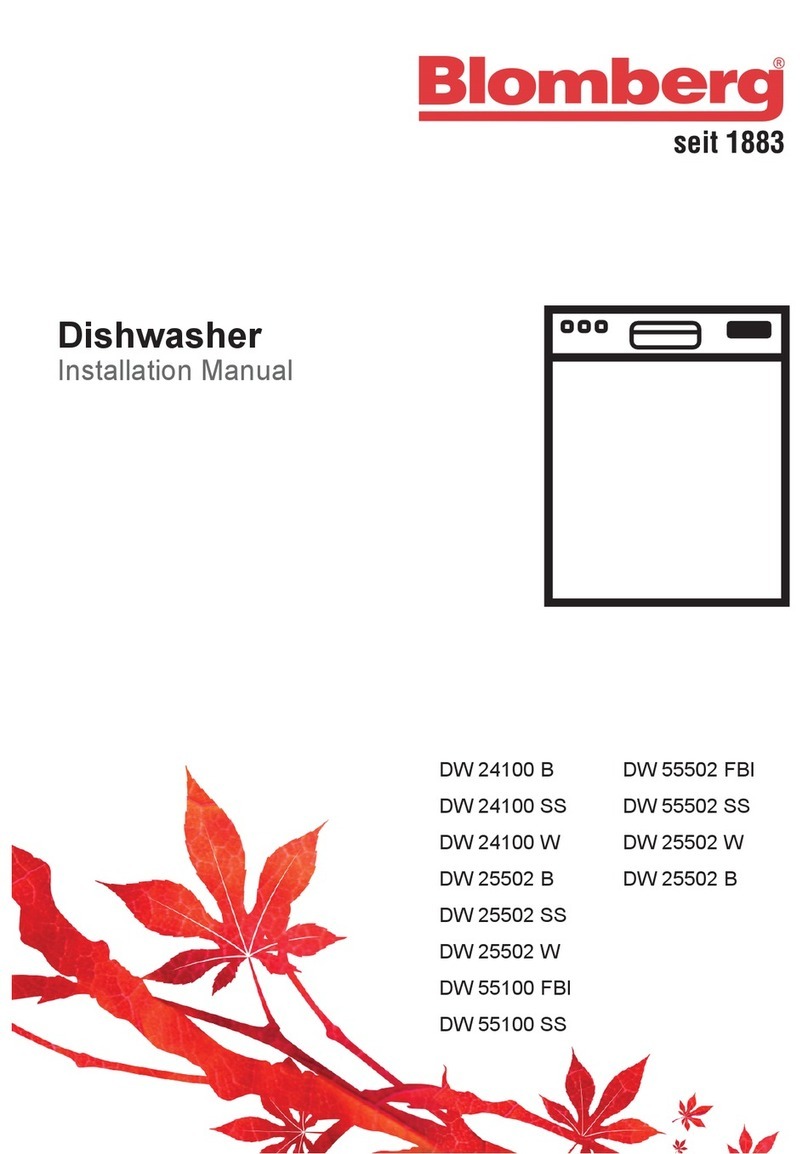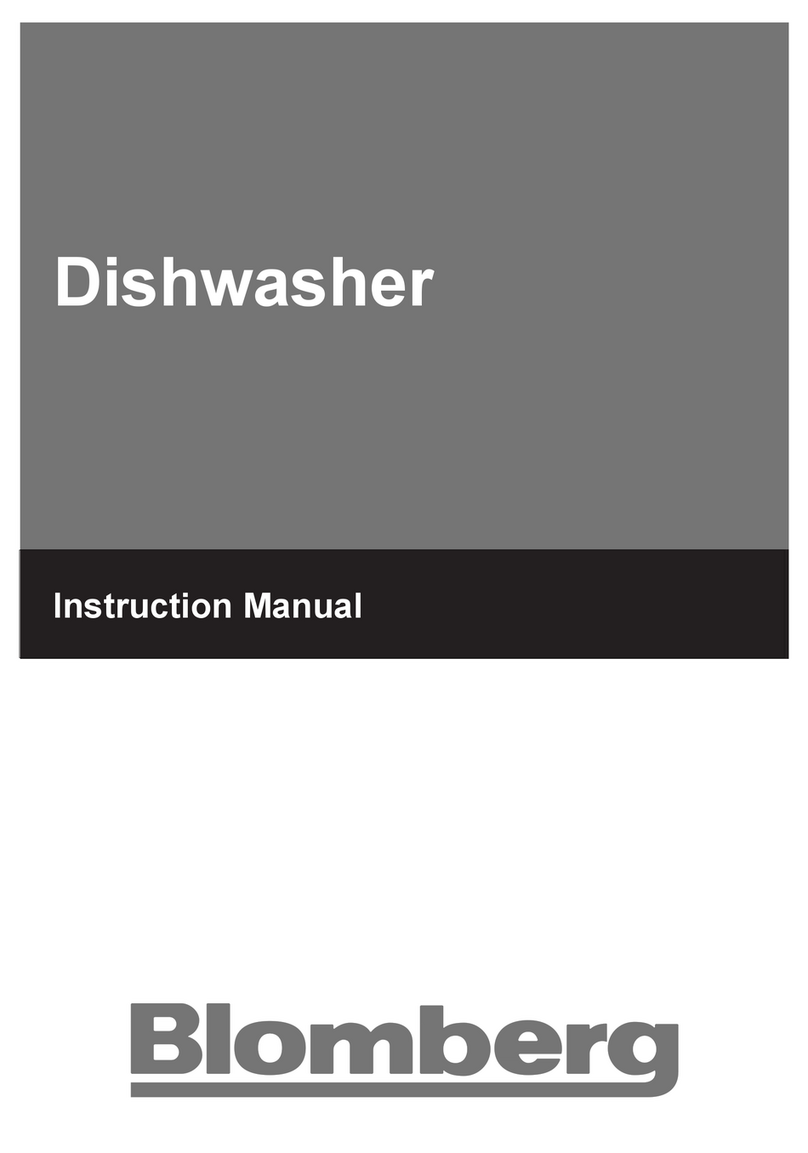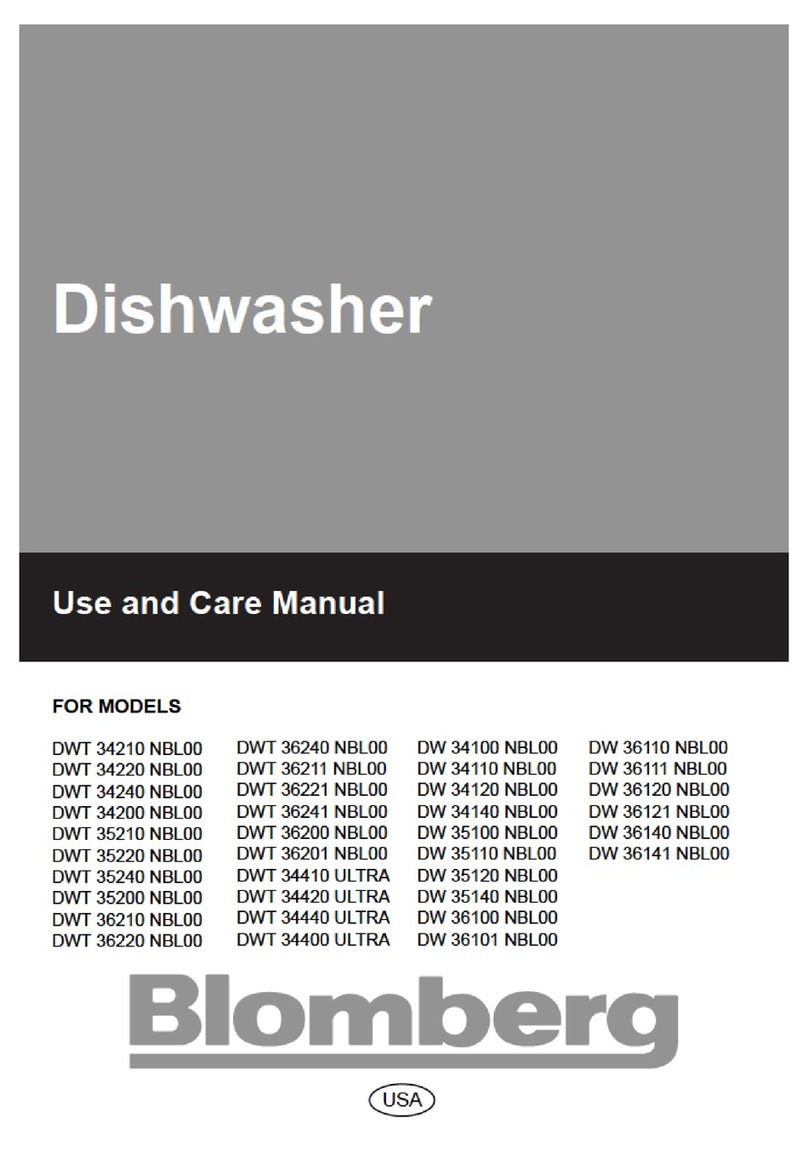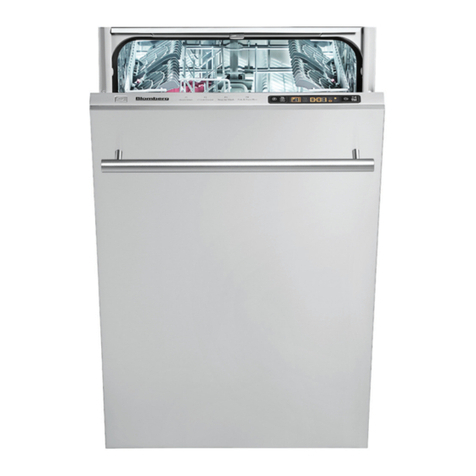19 20
Option Buttons
The various wash programs are intended for varying amounts
of soiling and crockery, as well as for different types of
crockery. You can use the option buttons to adapt the
programs to suit different requirements. Doing this can save
you time, money, and electricity. For instance:
-Use the High-Speed button to shorten the selected
programme if your dishes are only slightly soiled. Selecting
this option means, for example, that the dishwasher then
uses higher water pressure and consumes approx. 25 %
less water and electricity.
- Use the Night button if you would like to wash your
dishes at night, whether you want to take advantage of
night-time power rates or you simply want to clean dishes
first thing in the morning. This lowers the water pressure
used, producing less noise and consuming less electricity.
You can also use this function if you would like to wash
more fragile items.
The following table shows which options are available for
each programme. If a particular option is not available for
the programme selected, this is indicated in the multifunction
display.
To add an option to the programme:
1. Use the programme selector knob to select a
programme, or use button to select the autosense
programme.
2. Use the option buttons , and to select the desired
option. The LED indicator for the appropriate button and the
corresponding symbol in the display light up.
3. Use the Start/Stop button to start the programme.
The High-Speed and Night options cannot be selected at
the same time because they cancel each other out. Only
the last selected option is activated. This can be seen on
the buttons LED indicator and by the symbol shown in the
display.
Pressing the option button again cancels the selection and
the respective symbols light goes out.
Programme selection
After you have switched the appliance on, use the programme
selector knob to select the desired programme according
to the level of soiling, or simply select the autosense program
function . Use the Start/Stop button to start the programme
shown in the multifunction display.
The time remaining on the selected programme is shown in
the multifunction display . The programme duration may
vary according to the room temperature, tap water
temperature, and the amount of dishes. The remaining run
time may therefore adjust itself as the programme runs.
Time Delay
The Time Delay button allows you to delay the start time of
a programme by up to 24 hours. This is only possible if the
programme has not yet started.
Use the programme selector knob to select the desired
programme or choose the autosense programme .
Press the Time Delay button .The symbol for the activated
time delay , the hourglass, briefly lights up in the
multifunction display.
You can now use the programme selector knob to select
the desired time delay which is shown in display . The
programme selector knob can be turned both clockwise and
counter clockwise.
Use the Start/Stop button to activate the time delay. The
time remaining and the hourglass are shown in the
multifunction display until the programme begins. Once the
time set has been reached, the selected programme starts
automatically; the display will then show the time remaining
on the programme.
7
8
10
789
3
2
13
10
Bio 55°C
Programme
Options Available
High-Speed Night Crystal dry
Pre-wash
Mini 35°C
Delicate 40
°C
Bio 55
°C
Mix
Intensive 70
°C
Auto 55
°C - 65°C
Hygiene+ 70
°C
Economy 50
°C
ü
ûû û
ûû
üüü
üüü
üüü
üüü
ûû û
ûû û
ûû û
3
= Not available = Available
3
5
14
2
13
10
3
2
You can still change the time delay once the time
delay function has een activated:
To do this, first press the Start/Stop button . If you do
not do this, the multifunction display will show "Time delay
active" and changes cannot be made. Pressing the
Start/Stop button deactivates the time delay function.
Now press the Time Delay button , then turn the
programme selector knob either counter clockwise or
clockwise to shorten or to extend the time delay. Press
the Start/Stop button to reactivate the time delay.
5
3

